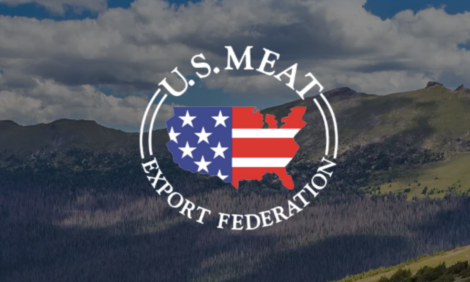



Livestock Sector Can Hit Climate Change Targets
UK - The English livestock industry can overcome the challenges of its contribution to greenhouse gas (GHG) emissions, according to leading livestock scientist Dr Duncan Pullar.Dr Pullar, head of research and development at EBLEX and architect of the beef and sheep sector’s two environmental roadmaps, believes it will be tough to meet Government targets to reduce emissions by 11% in the next 10 years, but better tools and an understanding of the issues will enable it to succeed.
The comments come in a new book Nutrition and Climate Change – major issues confronting the meat industry, which is itself the result of the Langford Food Industry Conference last year, supported by EBLEX and BPEX. Key speakers from the conference have contributed chapters to the book.
In his paper, entitled Meat Production and the Climate Change Agenda, Dr Pullar, currently interim sector director for DairyCo, a sister organisation to EBLEX within the Agriculture and Horticulture Development Board (AHDB), explains the lifecycle analysis work carried out for the roadmaps to look at the GHG performance of the industry now, and how improvements can be made in the future.
“Improving the feeding efficiency of slaughter stock offers the greatest emissions reduction benefits but can be supported by improvements in health, fertility and longevity of breeding stock,” he said.
“Improvements in productive efficiency throughout the production chain will be important in achieving the targets set. The modelling also reveals that the level of balanced improvements required to deliver the emissions reduction targets are within the bounds of technical possibility – but no one tack will deliver all the change needed.”
For beef production, an achievable five per cent improvement in forage energy density, will lead to a 0.31 kg CO2 eq reduction per kg of meat produced (2.2 per cent). For sheep, a similar improvement in feeding efficiency will see a 4.1 per cent saving in emissions. Allied to genetic selection for improved feed efficiency and healthier animals, the GHG targets are achievable.
Looking at alternative forage crops, maize silage, high sugar ryegrasses and greater use of clover can all help bring the necessary benefits in feed efficiency.
The message that better environmental performance, through simple changes by individual farmers, goes hand in hand with better economic performance is also key to encouraging more producers to examine their own practices.
EBLEX’s work on the beef and sheep sector’s environmental footprint and what can be done to improve it has been published in two roadmaps: Change in the Air, looking at GHG emissions and energy use, and Testing the Water, looking at economic improvements correlating with environmental improvements, water usage, landscape benefits and the processing sector. Both are available to download at www.eblex.org.uk
The expertise has fed into the Greenhouse Gas Action Plan, (GHGAP) launched in Westminster last week by Agriculture Minister Jim Paice, looking at how the industry as a whole can work together to make improvements. Find out more at http://www.eblex.org.uk/news/GHGAP-launch.aspx
| TheCattleSite News Desk | Read more EBLEX News here |


